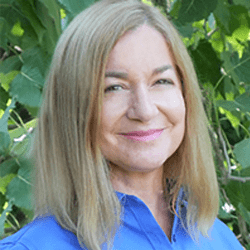Progressing through multiple interview rounds: many executive or C-Suite level job interviews involve several rounds on multiple days.
This video provides tips to help you move successfully through multiple stages of the interview process and how to engage with interviewers at each stage.
Executive or C-Suite interviews consist of a multiple-stage interview process:
- Pre-screening: A phone or Skype interview
- Second Round: A series of one-on-one face-to-face interviews
- Third Round: Panel interview
- Final Round: Group Presentation
PRE-SCREENING
A pre-screening telephone call or video interview is a common first step. It is usually conducted by a human resources professional who is focused on deciding if they should present you to the hiring manager. They will be listening to determine if your skills and experience meet the minimum job requirements. You need to ensure that all the boxes get checked.
FIRST FACE-TO-FACE INTERVIEW
The first face-to-face interview will likely be a series of one-on-one face-to-face interviews. At this stage, you may encounter peers, potential collaborators from other groups, and the hiring manager. Each will be looking for something different from you.
- Peers: Peers have a deep understanding of the skills required for the role. They will be assessing your capabilities of doing the job. They will ask this type of question:
- How do you build strong working relationships?
- What are your measures of success and how do you ensure all parties are recognized?
- How would others describe your working style?
With each of your answers, work to verbalize your skill set and connect at a peer level.
- Potential collaborators from other groups: As more organizations move to matrix modeled collaboration, employees are increasingly required to collaborate with other groups. When these potential collaborators are interviewing you, their main objective is to understand what it will feel like to collaborate with you. They will ask these types of questions:
- Describe a project that required input from people at different levels in the organization. How did you navigate that?
- Can you share an experience where a project dramatically shifted direction at the last minute? What did you do?
- Tell me about a time when you were communicating with someone and they did not understand you. What did you do?
Your answers should highlight your collaboration experience and potential.
- Hiring Manager
The hiring manager will ask about:
- Relevant experience: Go through the job description, line by line, ensuring you have talking points for each highlighting your relevant skills.
- The story behind your job history: The two patterns of hiring managers look for are your tenure at each job and the progression of your roles. It is important to have a short “story” ready to articulate the motivations behind the different moves in your career, and how each transition helped you grow. Address any gaps in employment with prepared short statements.
Your answers should be prepared ahead of time.
PANEL INTERVIEW
The next round is often a panel interview, where you face several interviewers at the same time. This type of interview is used to evaluate how you interact in a group setting, how you manage the stress of multiple interviewers, and how you communicate with a varied audience. To ensure success:
- Think of this interview as a simulation of a group meeting
- Address everyone in the room and focus on engaging with them.
- Take control of the pace of the conversation by pausing to formulate your answers before responding.
- Tie your answers back to previous questions.
- Demonstrate a high level of attention
- Show that you can think on your feet.
GROUP PRESENTATION
If you are invited to the final round, it means you have the right skill set and are a good fit. Now the focus shifts to a comparison between you and the other remaining candidates. In this round, you will give a group presentation with two components.
- First, you will present your story. This is where you introduce yourself and highlight your core experience. Focus on connecting the dots between your experience and the opportunity.
- Second, you will present your solution to a given business problem. You will create a presentation that outlines the problem and your solution. Budget the flow of your presentation to ensure that it is the appropriate length. Practice your presentation delivery ahead of time so that it flows smoothly.
Before every interview, think through the following questions:
- What does this interviewer care about most?
- What does this interviewer perceive as my weakness?
- How can I differentiate myself from other applicants?
Keeping these questions in mind at each round will allow you to be progressively more captivating to your interviewers as you move through consecutive interview rounds.
 Written by:
Written by:
Kathy Lin, Marketing Communications Manager
Kathy writes content for Tal Healthcare, a healthcare career website. She has a background in recruiting, sales, and teaching. She holds a BA in Biology from the University of Vermont. When she isn’t writing you can find her outside running, skiing or biking.
